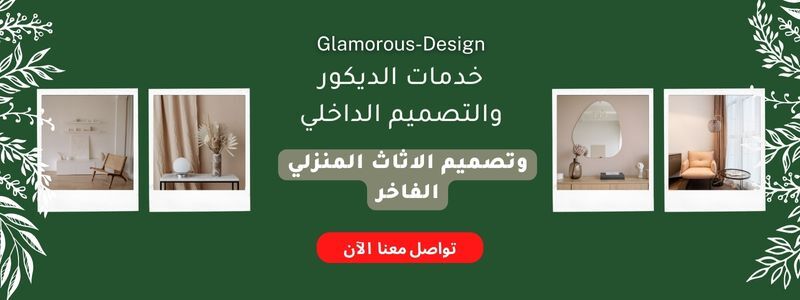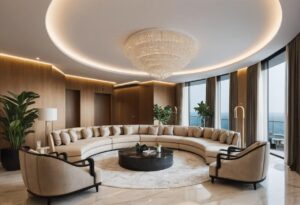Imagine renovating your living room, finally creating that dream home office, or giving your bedroom a stylish makeover, all without stepping foot outside or juggling a million contractors. It sounds like a fantasy, right? Not anymore. E-interior design, also known as virtual or online interior design, is revolutionizing the way we approach home makeovers.
It brings professional design expertise directly to your screen, offering a convenient, affordable, and surprisingly personalized way to transform your spaces. In this article, we’ll delve into the world of e-interior design, exploring what it is, how it works, and, most importantly, why it might be the perfect solution for your next design project.
What is E-Interior Design?
E-interior design, at its core, is a professional interior design service delivered entirely online. It eliminates the need for traditional in-person consultations and site visits, leveraging technology to connect clients with designers and facilitate the entire design process remotely.
Think of it as having a personal interior designer at your fingertips, accessible through your computer or mobile device.
Instead of meeting face-to-face, communication happens through email, video calls, online platforms, and shared mood boards. Clients provide information about their space, including measurements, photos, and inspiration images. Designers then create a customized design plan, which may include:
- Mood Boards: A visual collection of images, colors, and textures that represent the overall aesthetic direction for the space.
- Space Planning: A layout showing how furniture and other elements will be arranged in the room to maximize functionality and flow.
- Furniture and Decor Selections: Specific recommendations for furniture, lighting, rugs, artwork, and other decorative items, often with direct links to purchase them.
- Color Palettes: Suggested paint colors, fabrics, and other materials to create a cohesive look.
- 3D Renderings (sometimes): Photorealistic visualizations of the designed space, allowing clients to see the final result before implementation.
- Shopping Lists: A comprehensive list of all the items needed to complete the design, including product names, retailers, and prices.
- Implementation Guides: Step-by-step instructions and tips for bringing the design to life.
E-interior design services vary in scope and complexity. Some platforms offer basic packages with limited revisions, while others provide more comprehensive services with ongoing support. The level of interaction with the designer can also differ, ranging from minimal feedback to collaborative design discussions.
Ultimately, e-interior design offers a flexible and accessible way to work with a professional designer, regardless of your location or budget.
Who is E-Interior Design For?
E-interior design caters to a broad range of individuals and needs, making professional design accessible to a wider audience than traditional interior design services. It’s particularly well-suited for:
1. Budget-Conscious Individuals:
E-design often comes at a lower price point than traditional design due to reduced overhead costs. This makes professional design services attainable for those with limited budgets who may have previously felt it was out of reach.
2. DIY Enthusiasts:
For those who enjoy a hands-on approach, e-design provides the professional guidance and direction needed to execute a design project themselves. It empowers DIYers with a clear plan and the confidence to bring their vision to life.
3. Busy Professionals:
Juggling work, family, and other commitments can make scheduling in-person design consultations a challenge. E-design offers the flexibility to communicate with designers and review design plans at any time, from anywhere.
4. Those Living in Remote Areas:
Access to interior design services can be limited in rural or remote locations. E-design bridges this gap, connecting clients with designers regardless of geographical constraints.
5. People with Specific Design Needs:
Whether you have a unique style, require accessibility modifications, or are simply struggling to pull a room together, e-design offers personalized solutions tailored to your individual requirements.
6. Renters:
E-design can be a great option for renters who want to personalize their space without making permanent changes. Designers can focus on furniture, decor, and temporary solutions that can be easily moved or removed.
7. Those Seeking a Second Opinion:
Even if you’re working with a local designer, e-design can be a valuable tool for getting a fresh perspective or exploring alternative design directions. It offers a cost-effective way to gain additional insights and ensure you’re making the right choices.
E-Interior Design vs. Traditional Interior Design: A Head-to-Head Comparison
Choosing between e-interior design and traditional interior design is a crucial decision. Let’s break down the key differences, highlighting the advantages and disadvantages of opting for the virtual approach:
E-Interior Design: The Advantages (Compared to Traditional)
- Budget-Friendly: E-design wins hands-down on cost. Lower overhead translates to significantly more affordable design services. This makes professional design accessible to a wider range of budgets.
- Unparalleled Convenience: Forget scheduling conflicts and in-person meetings. E-design lets you collaborate with designers from anywhere, at any time, fitting seamlessly into even the busiest lifestyles.
- Faster Turnaround Times: Projects often progress more quickly with e-design. Less reliance on coordinating schedules means less waiting and a faster path to your dream space.
- Global Designer Access: The world is your oyster! E-design breaks down geographical barriers, allowing you to choose from a vast pool of talented designers, not just those in your local area.
- Empowered DIY: If you enjoy a hands-on approach, e-design is your perfect match. You receive the professional guidance and design plan, but you take the reins on implementation, saving on installation costs.
- Transparent and Predictable Pricing: Many e-design services offer package-based pricing, making budgeting straightforward and eliminating unexpected costs.
E-Interior Design: The Trade-offs (Compared to Traditional)
- Less Personal Touch: While communication is frequent, it’s primarily digital. You’ll miss the face-to-face interaction and relationship-building that comes with traditional design.
- Reliance on Client Accuracy: E-design relies heavily on the client providing accurate measurements, photos, and descriptions of their space. Inaccurate information can lead to design flaws.
- Limited On-Site Assessment: Designers can’t physically visit your space, limiting their ability to assess its unique characteristics and potential challenges firsthand.
- Risk of Miscommunication: Digital communication, while convenient, can sometimes lead to misunderstandings or misinterpretations of design concepts.
- Client-Managed Project: You’ll be responsible for purchasing furniture, coordinating deliveries, and managing any necessary installations. There’s no project manager overseeing the process.
- Fewer Trade Discounts: E-designers typically don’t have the same access to trade discounts on furniture and materials as traditional designers.
- Potential Limitations for Complex Projects: For large-scale renovations or projects requiring extensive on-site coordination, traditional design might be a better fit. E-design is often best suited for smaller to medium-sized projects.
From Inspiration to Reality: A Step-by-Step Example of an E-Interior Design Project
Let’s walk through a hypothetical e-interior design project to illustrate the process and give you a clearer picture of how it works in practice. Our example will focus on a living room makeover.
1. The Client’s Vision:
Sarah, a busy professional, wants to refresh her living room. She loves a modern farmhouse style with a touch of bohemian flair. She’s on a budget and prefers to do most of the work herself. She finds an e-design platform that offers a style quiz and connects her with designers specializing in her preferred aesthetic.
2. Choosing a Designer and Package:
Sarah takes the style quiz and browses designer portfolios. She finds a designer, Emily, whose work resonates with her. Emily offers a “Living Room Refresh” package that includes a mood board, space plan, furniture and decor selections, a shopping list, and two rounds of revisions.
3. The Initial Consultation (Online):
Sarah and Emily connect via video call. Sarah shares her inspiration images from Pinterest, discusses her budget, and explains her needs for the space (e.g., comfortable seating, good lighting, and a place to display family photos). She provides Emily with photos and accurate measurements of the room.
4. The Mood Board and Initial Design Concept:
A few days later, Emily sends Sarah a mood board showcasing the proposed color palette, textures, and overall style direction. It features warm neutrals, pops of blue and green, and a mix of natural materials like wood and linen. Sarah loves the direction and provides some initial feedback.
5. Space Planning and Furniture Selection:
Emily creates a space plan showing how the furniture will be arranged to maximize flow and functionality. She suggests a comfortable sectional sofa, a rustic coffee table, and two accent chairs. She provides links to specific furniture pieces that fit Sarah’s budget and style.
6. Revisions and Refinements:
Sarah requests a few changes. She wants a slightly larger rug and a different style of lighting fixture. Emily quickly revises the design based on her feedback, providing alternative options.
7. The Final Design Plan and Shopping List:
Once Sarah is happy with the design, Emily delivers the complete design plan, including:
- Detailed Space Plan: A floor plan showing furniture placement.
- Furniture and Decor Selections: Links to purchase all recommended items.
- Color Palette: Paint colors and fabric swatches.1
- Shopping List: A comprehensive list of everything Sarah needs, with prices and retailers.
- Implementation Guide: Tips and instructions for bringing the design to life.
8. Implementation:
Sarah uses the shopping list to purchase the furniture and decor. She follows Emily’s space plan to arrange the furniture and paint the walls. She hangs the artwork and adds the finishing touches.
9. The Final Result:
Sarah now has a beautifully refreshed living room that reflects her style and meets her needs. She’s thrilled with the result and grateful for Emily’s guidance. The entire process was convenient, affordable, and stress-free.
This example illustrates a typical e-design project. The specific steps and deliverables may vary depending on the platform, designer, and package chosen, but the general process remains the same.
Ready to Transform Your Space?
At Ghamrouss, we understand that creating a beautiful and functional home is a deeply personal journey. Whether you’re seeking a quick refresh or a complete overhaul, our team of experienced architects, interior designers, and artisans is here to guide you every step of the way.
We believe that everyone deserves access to exceptional design, and we’re passionate about making that a reality.
While we excel at comprehensive design solutions, we also recognize the growing need for accessible and convenient options. If you’re intrigued by the possibilities of e-interior design and are ready to embark on your own virtual transformation, we encourage you to connect with us.
Let’s discuss your vision, explore your style preferences, and discover how we can help you create the home you’ve always dreamed of, no matter where you are.
Contact us today to learn more about our e-design services and start your design journey! We’re excited to collaborate with you.





